Thu, 31 Jul 2014 . Last updated Fri, 13 Mar 2015 15:52
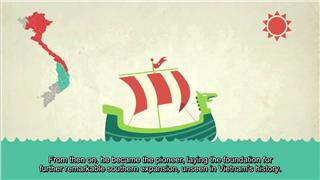

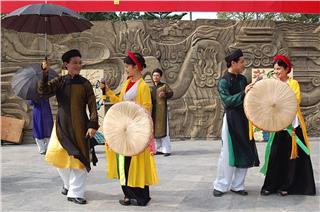
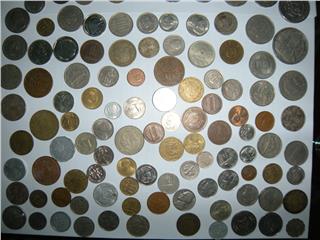
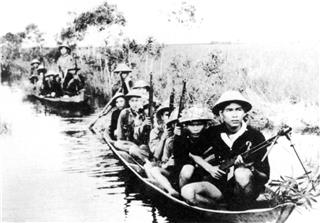
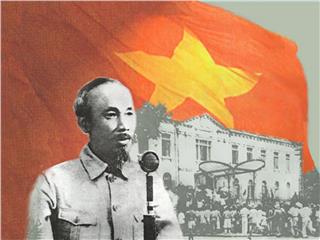
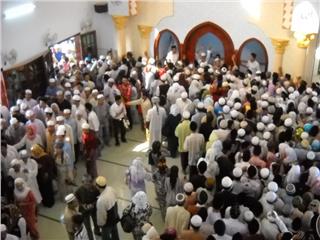


The Fascist victory in 1945 opened a new page in the history of the modern world, the whole world rejoiced and everyone hoped since then the world wars and the disasters to humanity would be permanently excluded. According to the propose of the United Kingdom, the United State, the Soviet Union that were considered as the heroes in the Second World War, in June 1945, representatives of 50 countries met in San Francisco, California, the United States to adopt the Charter of United Nations. The foreword of the charter committed clearly the legitimate hope of humanity: "We, the peoples of the United Nations determined to save the future generations from the war disaster”. Though the international organization had been vacillated, disorientated and was sometimes powerless against many problems, the ways that it generated in the solemn and glorious moment, are still paragon in the international relations today.
However, the big countries did not stop, even after winning each major power deployed right their gamble in Asia. After the Fascists troops were scattered, small countries fell into the scenario of a new world order. The factions in the Korean Peninsula in a struggle for power pushed the country into the focus of the game world, made them become the country's largest field, the chopper to contest new weapons.
June 1950, the tragic war in the Korean peninsula started. The Korean War, the world today referrers to as a festering wound that cannot heal. In addition to the tragic outcome of the matter, it is also a deep wound that is impossible to heal between the two divided parts. In the West, it was known by the name "Forgotten War".
In Vietnam, under the leadership of the Communist Party and the flag of Viet Minh front, the people in three regions had taken a completely different scenario to things that happened in the Korean peninsula. It was the consequence of a strong will accumulated from the thousand- year- history of a nation that people always call themselves compatriots, though the forces invaded and divided many times.
After the General Uprising in August 1945, despite giving the support of the United Kingdom and the United State to reoccupied Indochina and restore the colonial system order in their new game. The French colonists could not imagine that in a short time, the independent Vietnam country and a new regime was actually formed, recorded deep in the heart of Vietnamese people from Nam Quan to Ca Mau. They and later the Americans could not understand that, after the red flag with yellow star, the symbol of Ho Chi Minh government and the Democratic Republic of Vietnam fluttered across the country, this nation became a unified bloc, an extraordinary effort that Chinese feudal dynasties formerly were impossible to swallow despite really dominating and assimilating for thousands of years.
The French troops coming back Vietnam in September 1945 could not bring the master position to reclaim the colony, to Vietnamese people that was an invading army. The only way of Southern compatriots with compatriots of the entire country was resistance against the French colonists.
Although the powerful countries with the giant theoretical machine wanted to adjust the view of happenings at that time according to their vision, the Vietnam history could only record that on September 23rd, 1945, began the war against French colonists of the people and the government of the Democratic Republic of Vietnam. Ho Chi Minh Government and the entire Vietnamese people in the first independence days did not desire to choose the war solution. During 1946, the government implemented successively many conciliatory and wise acts to complete the new government and to avoid an expansive and long-term war. In January 1946, the National Assembly 1 of the Democratic Republic of Vietnam, the result of free election on January 6th 1946 on the whole country opened in Hanoi and appointed Ho Chi Minh to set up the Coalition Government Resistance.
March 6th 1946, shortly after the establishment, the Coalition Government Resistance signed a preliminary agreement with the French government. This Agreement had important meaning, the French government recognized that the Democratic Republic of Vietnam was a liberal country in the Indochinese Federation and the French sector unions having the government, parliament, military and private finance. The Vietnam Government agreed to 15,000 French troops in the North Vietnam to replace more than 200.000 troops of Chinese Nationalist Party and to scatter Japanese troops. The French promised to withdraw all troops within a period of 5 years, each year 3,000 troops. The French agreed to hold a referendum in the South on the uniform with the Democratic Republic of Vietnam. Both sides immediately implemented a ceasefire in the South.
April 1946, the Vietnam government sent a delegation to join in the Dalat conference with a delegation of French High Commissioner. This conference was to prepare for the official conference taking place in Pontainebleau between two governments Vietnam - France. The head of the delegation was the Foreign Ministry Nguyen Tuong Tam, the deputy was the general commander of the National Army Vo Nguyen Giap. The Pontainebleau conference was at a deadlock during 2-month negotiation due to the treacherous and devious plot of the colonialists. Expanding the Indochina War and escalating the war in the North, inciting anti- coalition government resistance factions, the French colonists pushed the war from the South to spread out all country.
September 12th 1946, Truong Chinh sent a letter to compatriots and soldiers, said that Vietnam nation today was different from the Vietnam nation before the great war, the French people today was not like the French people yesterday, the French empire was now no longer as before. The world situation after the war was different from the situation after the World War 1914-1918.Therefore, thought the Pontainebleau conference was aborted, our forces and French people, the strong democratic movement in the world were the factors showing that our people would overcome difficulties and obstacles towards full independence. French reactionaries could temporarily win some time, but as the international reactionary, they would ultimately fail because they advocated an unjust purpose, represented a fading force, the imperialism that the history ended in the death penalty.
The resistance on a national scale, unwanted things eventually must come. After provocative campaigns expanded by massacres in Hanoi, Hai Phong, the French demanded to disarm of the Democratic Republic of Vietnam government troops. December 19th 1946, President Ho Chi Minh wrote the national resistance call. “We wanted the peace, we had concessions, but the more increasingly we compromised, the more French encroached because they determined to plunder our country once again. No, we would rather sacrifice all things, we determined not to lose our country and not to be slaves. The compatriots, we must rise up”.
The whole world and peace-loving people in France since then understood clearly what happened, things could avoid if the hot, crazy and extremist heads of the colonial faction in France did not appear at the same time, typically D’Argenlieur, the French high commissioner in Indochina. Juan Xanhtoni, who represented the French government, signed the Preliminary Agreement with the Ho Chi Minh Government on March 6th 1946 and took many efforts to save the situation in Indochina, at the end of his life, he wrote the memoirs about the peace missed in Indochina from 1945 to 1947.
The Xanhtoni’s story showed more clearly than the ignorance of colonialism when facing a Vietnam having a deserved representative and fully stature as Ho Chi Minh. In two years, from the Southern people fired resistance until the whole country forced to launch resistance, the Ho Chi Minh government showed clearly the goodwill and concessions but we never skipped the immutable principles: “the South was an integral part of Vietnam”. Last May 5th 1946, in the letter sent to the Southern people before the government delegation of Democratic Republic of Vietnam to France to begin the Phontennoblo talks, President Ho Chi Minh clearly stated "Knew the information, I and the delegation come to France to open the formal talks, compatriots of the entire country, especially the Southern people were anxious, worried about the future of the South. I hoped compatriots were calm, I promised that Ho Chi Minh did not betray our country, the Southern compatriot fight and sacrificed in many months to perverse the Motherland. So the compatriots of the entire country must be thankful to the Southern compatriots. The Southern compatriots were the people of Vietnam. The river can be dry, the mountain can erode, but the truth can be never changed”.
After returning from France, while the work was overload and the imminent war was inevitable, on October 23rd 1946, President Ho Chi Minh declared to the national people and affirmed once again “the Central, South, North belong to Vietnam country, we all shared a common ancestor, were the blood relation and brothers. The country had the Central, South, North as well as a family having three brothers, as well as France having Normandy, Vovangxo, Boster. No one can separate one family, no one can separate France and no one can divide our country.
After the nationwide resistance had explored, the localities proactively found the paths to the mountainous region to open communicative lines. Thanh Hoa found the path to Hoi Xuan, Suoi Rut, Co Dinh, Nui Nua. Nghe Tinh found the secret path to Con Cuong, Ngan Pho. Quang Binh, Quang Tri looked for the path through Truong Son to Laos, along the west of Truong Son Mountain to Zone 5.
At the end of 1947, the Central Resistance Committee found the path to Highlands connecting the South. From Bac Ai, Ninh Thuan began to find trails to Ninh Thuan, Binh Thuan and Southern East. This corridor was kept until the anti-American period. At that time, paving the way to supply the Southern compatriots was the most important thing. Since the early days, the central government sent missions based on the hilly terrain of Truong Son to survey and open the paths. Two first government missions were led by Ngo Tuan Nhon and Nguyen Duy Trinh. Ngo Tuan Nhon started from the Chen slope, Ha Tinh to Quang Binh, climbed the western Truong Son, returned Quang Tri through Thua Thien to Quang Nam, Quang Ngai. After that, the South Resistance Committee in Phu Yen guided for the mission to the South.
After coming to the South, seeing the difficulty of traveling on Truong Son Street, Ngo Tan Nhon founded the Vietnam Southern supply committee and directly operated this committee. Understanding the shortage of Zone 5 was medicines, he held to buy the western medicines in Saigon packed in the box and sent to the Zone 5 by road. Each year was 2 times.
Despite calling as the trail, the trails were not available. The missions must manually open trails, when they must climb mountains, when they had to cross streams. The most dangerous thing in these early days was the wild beast such as tigers, elephants, the deeper the forest was, the less footprints was. There are not only the beasts but also the malaria, mosquitoes that were also considered as enemies threatening the lives and health of people. After two missions of Ngo Tan Nhon and Nguyen Duy Trinh, the trails went from the North along Truong Son to the Central and Southern resistance bases were actually unstopped.
At that time, there are mostly trails, when going on the mountains, when going down the edge of the delta or going on the river. In addition to the officers and soldiers, we must rent ethnic people. In many cases, we had no money, the ethnic people were still willing to help. After two first missions, there are many revolutionary cadre missions out and in Truong Son, including the important missions such as the mission of Le Duan, Le Hien Mai, Ho Si Ngoi, Nguyen Chi Thanh, To Huu, Hoang Anh, Tran Quy Hai, Luu Quy Ky.
One of the most important missions coming to the South in 1948 was the government delegation consisting of Le Duc Tho representative of the central deputation and Pham Ngoc Thach who represented the government going from the mid-September 1948 to the early of September 1949 to Dong Thap Muoi.
May 1954, the resistance army defeated the entrenched fortification – Dien Bien Phu. Dien Bien was the challenge about correlation military between the French expeditionary army having weapons and American advisors and the troops of the Democratic Republic of Vietnam.
The failure of the French army in Dien Bien Phu dispelled all last hopes of the warlike colonial faction in France and forced the Allies to join in the Geneva conference table and to solve quickly Vietnam and Indochina problems. On July 21st 1954, Geneva Agreement was signed. This Agreement put an end the present of the French army in Indochina, facilitated the Resistance Government to return and takeover Hanoi capital, to continue directing the national liberation, unity territory.
However, it left open for a new invader putting its hand into the Indochinese chessboard, it was the American empire. Major countries after the bloody fights in the Korean battlefield wanted to arrange again the world order according to their framework in Indochina with its focus on Vietnam.
One of the persons who continued the revolutionary path of Ho Chi Minh president, commonly known as excellent student of Uncle Ho in the history of Vietnam, always grasped this spirit and affirmed that there was only path to the Vietnam revolution, spent nearly his whole life on the independence and freedom of the South, he was Le Duan. People of the South often called him by the informal name Ba Duan.
He was born in Quang Tri, participated in the revolution since 1928 and became one of the first Communist Party members. In the secret operating years, he was arrested and underwent French prisons as Son La, Kunlun. The long years in the prison, he along with Pham Van Dong, Le Duc Tho, Nguyen Van Linh, Pham Hung, Hoang Quoc Viet turned the prisons into the communist schools.
In 1945 the August Revolution won, Kunlun was liberated, together with the comrades, Mr. Ba embarked on the national resistance task. In 1946, Uncle Ho and the central party assigned Mr. Ba the duty of directing the Southern resistance. In 9 years of resistance, he was present throughout Southern battlefields. The armed forces in the South developed fast with main forces including the battalions, regiments winning these glorious victories. In 1954, the resistance against the French colonialists won, under the Geneva Agreement, the Southern armed forces must assemble in the North waiting the general election to unify the country 2 years later.
He was the person having the direct attachment to the southern revolution from the first days facing with the enemy, so he and his comrades got out the treacherous politics and conspiracy to divide long-term Vietnam of the enemy, anticipated the threats going to happen the Southern compatriots, he insisted and asked permission to remain in the South. He sent with Mr. Le Duc Tho: "He told the Uncle, 20 years later we meet together ". During the period from 1954 to 1959, the political situation in Southern was extremely complex.
The enemy suppressed and annihilated the almost revolutionary bases, the communist party members were subsequently arrested and killed. Mr. Ba disguised and lived with the people from Zone 5 to Ben Tre, Ca Mau and then Saigon to rebuild revolutionary organizations and bases. He persuaded the Southern people being resilient and believing in the hard and justness struggle of the nation. In 1956, Mr. Ba drafted his outline of the Southern revolution specifying that the revolutionary task in the southern Vietnam was the liberation of the South to escape the yoke of the feudal and imperialist and specified the direction, mainly based on the political force of the masses associated with armed struggle to seize power. This proposal was the prerequisite for the resolution 15 and throughout the way for the national liberation, reunification.
Source: YouTube.com under Creative Commons

 Đặt vé máy bay cho người Việt?
Bấm vào đây
Đặt vé máy bay cho người Việt?
Bấm vào đây
Our service uses cookies for technical, analytical and marketing purposes. See our Cookie và Privacy policies for more information. If you agree to this, just keep browsing.


